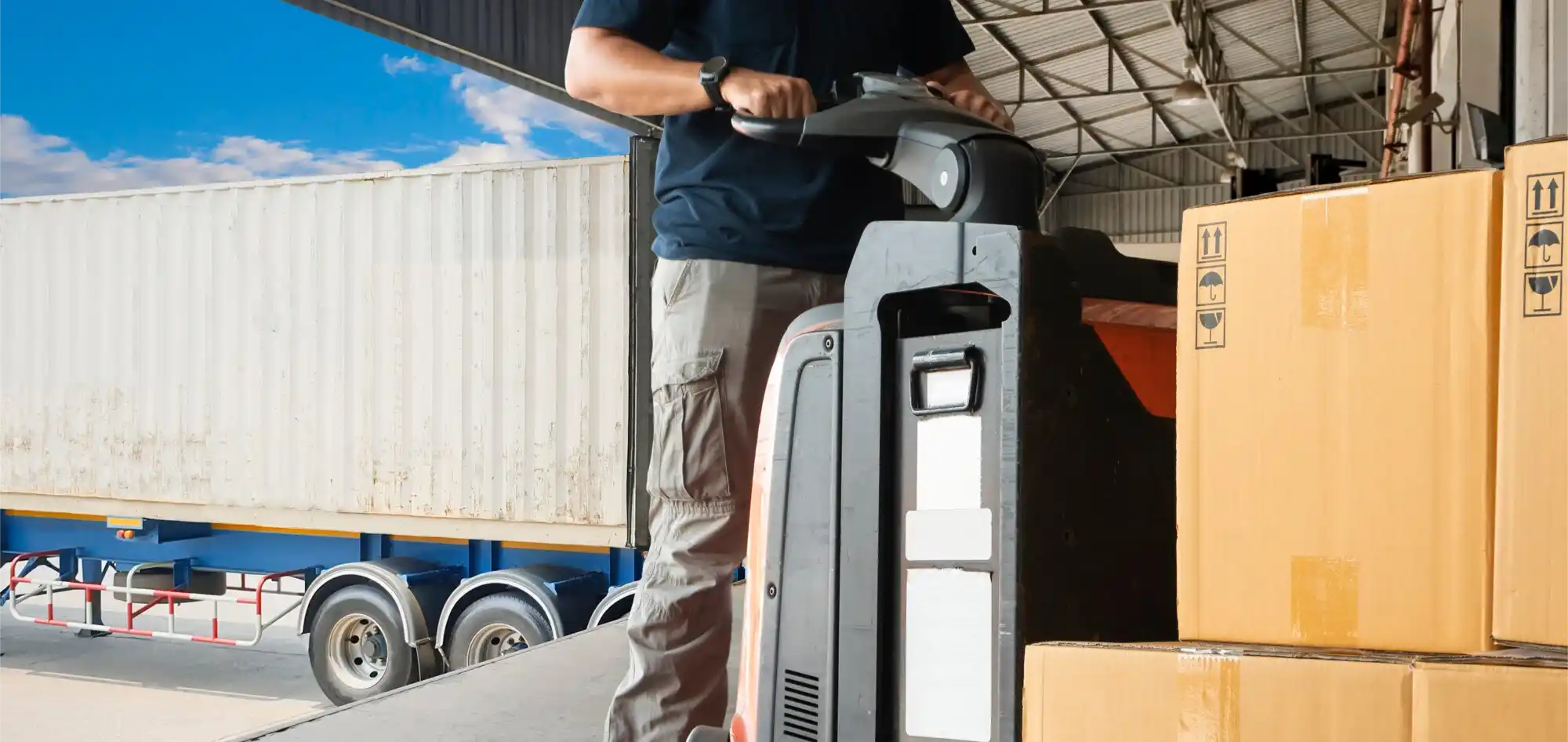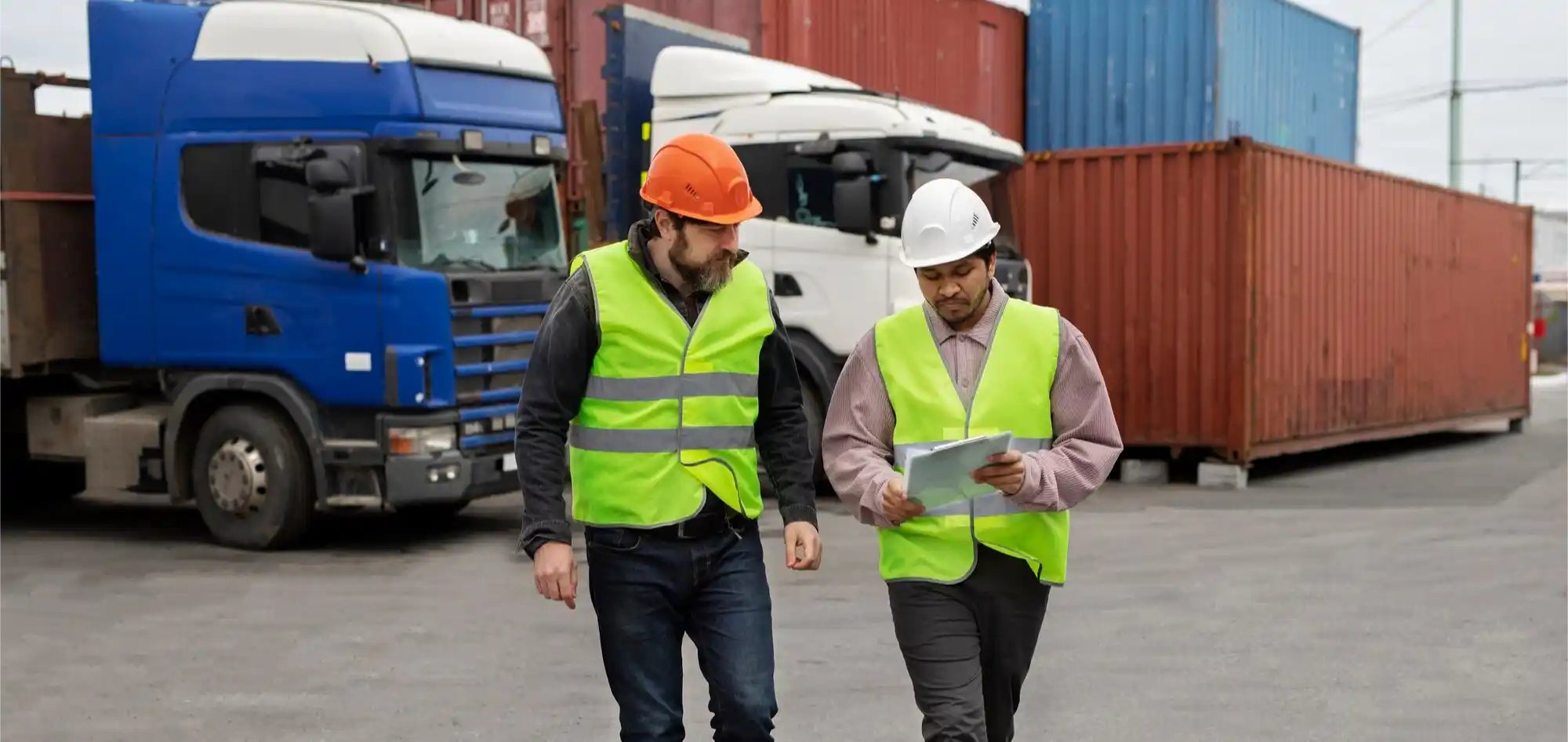In today’s fiercely competitive global market, businesses are constantly seeking innovative strategies to optimize their supply chain and minimize expenses. One particularly effective method involves understanding the role of transloading in reducing freight costs. This practice entails transferring goods from one mode of transportation to another, allowing companies to harness the unique strengths of various transport options.
From rail to truck, ship to plane, and any combination thereof, transloading offers significant advantages. In this comprehensive blog, we’ll delve deep into how the role of transloading in reducing freight costs can be a game-changer for your business, analyzing its benefits, exploring its impact on freight efficiency, and showcasing real-world examples.
Table of Contents
What Is Transloading?

Transloading is the process of transferring goods from one mode of transport to another during the supply chain journey. This can include, but isn’t limited to, shifting freight from rail to truck, truck to ship, or vice-versa.
The role of transloading in reducing freight costs becomes apparent when businesses utilize this flexibility to their advantage. By strategically taking advantage of lower freight rates for certain transport modes over specific distances or for specific commodities, companies can significantly lower their overall shipping expenses, enhancing their bottom line and competitive edge.
How Transloading Reduces Freight Cost
By strategically employing transloading services, businesses can effectively eliminate the inefficiencies often associated with direct shipping methods. For instance, rail transport frequently offers lower rates over long distances compared to trucking, particularly for bulk commodities.
However, it may not always be feasible or practical to deliver goods directly to a final destination via rail, a scenario in which The Role of Transloading in Reducing Freight Costs becomes particularly pertinent. By strategically incorporating transloading into their logistics plan, companies can combine the economical benefits of rail with the flexibility and accessibility of trucks to achieve greater savings and operational efficiency.
Example Case Study: The Cost Savings of Transloading
| Transportation Mode | Cost per Ton-Mile | Transit Time | Flexibility |
| Truck | $2.00 | 1 day | High |
| Rail | $0.50 | 3 days | Low |
| Ship | $0.10 | 7-30 days | Very Low |
In the above table, we observe that while rail and ship transport are generally more economical on a per-ton-mile basis, the total savings need to factor in transit times, flexibility, and handling costs. In a scenario where a company needs to transport bulk materials over a 1,000-mile distance, opting for rail followed by truck transloading can lead to significant overall savings.
For even longer distances, a combination of ship, rail, and truck might be the most cost-effective solution. In many scenarios, this optimized approach results in enhanced efficiency and streamlined operations, leading to greater cost savings over time. This is where understanding the role of transloading in reducing freight costs is essential.
The Impact of Transloading on Freight Efficiency
Beyond mere cost savings, understanding the role of transloading in reducing freight costs also extends to enhancing overall freight efficiency. Transloading enables companies to respond more swiftly to market demands by optimizing their routes and reducing delivery times, increasing overall efficiency and customer satisfaction. This is done by utilizing each transport mode for what it does best and minimizing the drawbacks of each.
Role of Transload in Reducing Freight Costs
Utilizing transloading can lead to decreased dwell times at ports and freight stations. By maximizing truck capacity and ensuring that goods are moved promptly, businesses can enjoy faster turnaround times, improved inventory management, and overall enhanced customer satisfaction. Understanding The Role of Transloading in Reducing Freight Costs is key to this strategic approach, which optimizes various aspects of the supply chain, contributing to its efficiency. The key is in a well-orchestrated plan where goods can be transferred between modes quickly and efficiently.
Advantages of Transloading Logistics
The benefits of transloading logistics are numerous and include:
- Cost Reduction: By using more affordable shipping methods and optimizing routes based on distance, volume, and urgency.
- Flexibility: The ability to quickly pivot between different modes of transport based on current conditions, market demands, or unforeseen circumstances.
- Improved Access: Enhanced reach to remote or otherwise inaccessible areas that may not be directly serviced by major transportation routes.
- Reduced Risk: By using multiple modes, you limit the impact of delays or disruptions to one particular transport type.
- Increased Capacity: Transloading facilities are often located near major transportation hubs and can help increase your overall capacity during peak seasons.
Industries That Benefit from Transloading Services

A diverse array of industries can benefit from transloading, including:
- Retail: Major retail corporations like Costco utilize transloading services in Canada to efficiently manage their complex supply chains and reduce freight costs significantly.
- Energy: Industries managing large-scale projects, like those involving solar panels, for example, leverage Canada solar panel transloading to facilitate shipment to diverse locations within the nation, optimizing logistics and costs.
- Manufacturing: Especially for companies focused on international markets, transloading provides a critical and cost-effective pathway for shipping goods, streamlining operations and maximizing profitability.
- Agriculture: Transloading allows for efficient movement of agricultural products from farms to processing facilities and distribution centers, especially in regions with varied infrastructure.
- Construction: Transportation of heavy construction materials like steel, cement, and lumber can be significantly optimized through transloading, reducing costs and improving delivery timelines.
Transloading in Canada
Transloading in Canada is of particular significance given the country’s vast geography, diverse industries, and strategic position in North American trade. Major urban centers such as Transloading in Vancouver, Transloading in Toronto, and Transloading in Montreal offer sophisticated and comprehensive facilities that simplify the logistics challenges faced by suppliers. Furthermore, leveraging third-party Logistics Canada helps companies to tap into local expertise, specialized infrastructure, and optimized transportation networks.
Example of Costco Transloading Service in Canada
Costco’s transloading service in Canada exemplifies how this method can effectively reduce freight costs while maintaining high levels of service and product availability. Understanding The Role of Transloading in Reducing Freight Costs, Costco strategically consolidates shipments at key central hubs and then redistributes them as needed to individual retail locations. This minimizes overall shipping expenses and ensures consistent product availability across all of its Canadian stores.
Fulfillment Service Providers
For companies looking to seamlessly integrate transloading into their supply chain management operations, several specialized fulfillment service providers stand out as industry leaders. Exploring The Role of Transloading in Reducing Freight Costs can help in choosing the right provider to streamline your logistics.
- Fulfillment by Amazon: A comprehensive solution for e-commerce businesses, offering warehousing, packing, and shipping services, including access to vast transportation networks.
- DelGate: A technology-driven fulfillment provider specializing in fast shipping and inventory management for e-commerce brands.
- Easyship: A global shipping platform that simplifies cross-border logistics, offering access to a network of carriers and streamlined customs clearance processes.
- Red Stag Fulfillment: A fulfillment provider focused on handling large, heavy, or fragile items, with expertise in managing oversized and complex shipments.
- Agistix: A logistics company specializing in supply chain management and freight forwarding, offering customized solutions for businesses of all sizes.
These providers specialize in offering tailored logistics solutions, including customizable transloading options that are engineered to enhance efficiency, maximize cost-effectiveness, and reduce transportation expenses. They can help you understand and implement the role of transloading in reducing freight costs.
Transloading in Vancouver, Toronto, and Montreal

Transloading in Vancouver, with its proximity to major ports and rail lines, serves as a crucial gateway for goods entering and exiting Canada from the Pacific. This makes it ideal for companies importing goods from Asia and distributing them across Canada.
Transloading in Toronto, being a major industrial and commercial hub, offers extensive transloading facilities that cater to a wide range of industries. Its central location within Canada makes it an efficient distribution point for goods moving east to west or north to south.
Transloading in Montreal, with its access to the St. Lawrence Seaway and major rail networks, is strategically positioned for international trade. It’s particularly important for companies dealing with goods coming from Europe and the eastern United States.
Canada Solar Panel Transloading
Canada solar panel transloading has emerged as a specialized area within the logistics industry due to the increasing demand for renewable energy. The Role of Transloading in Reducing Freight Costs plays a vital role in this specialized area, which involves careful handling and efficient transportation of fragile and oversized panels.
Conclusion
The role of transloading in reducing freight costs is undeniable for businesses aiming to optimize their supply chain, enhance efficiency, and improve their competitive edge. By understanding and leveraging transloading, companies can effectively navigate the complexities of supply chain logistics, strategically balance costs and delivery timelines, and achieve substantial cost savings.
For more information on optimizing your logistics strategy and understanding the role of transloading in reducing freight costs, refer to Supply Chain Dive for expert insights, industry news, and valuable resources.





